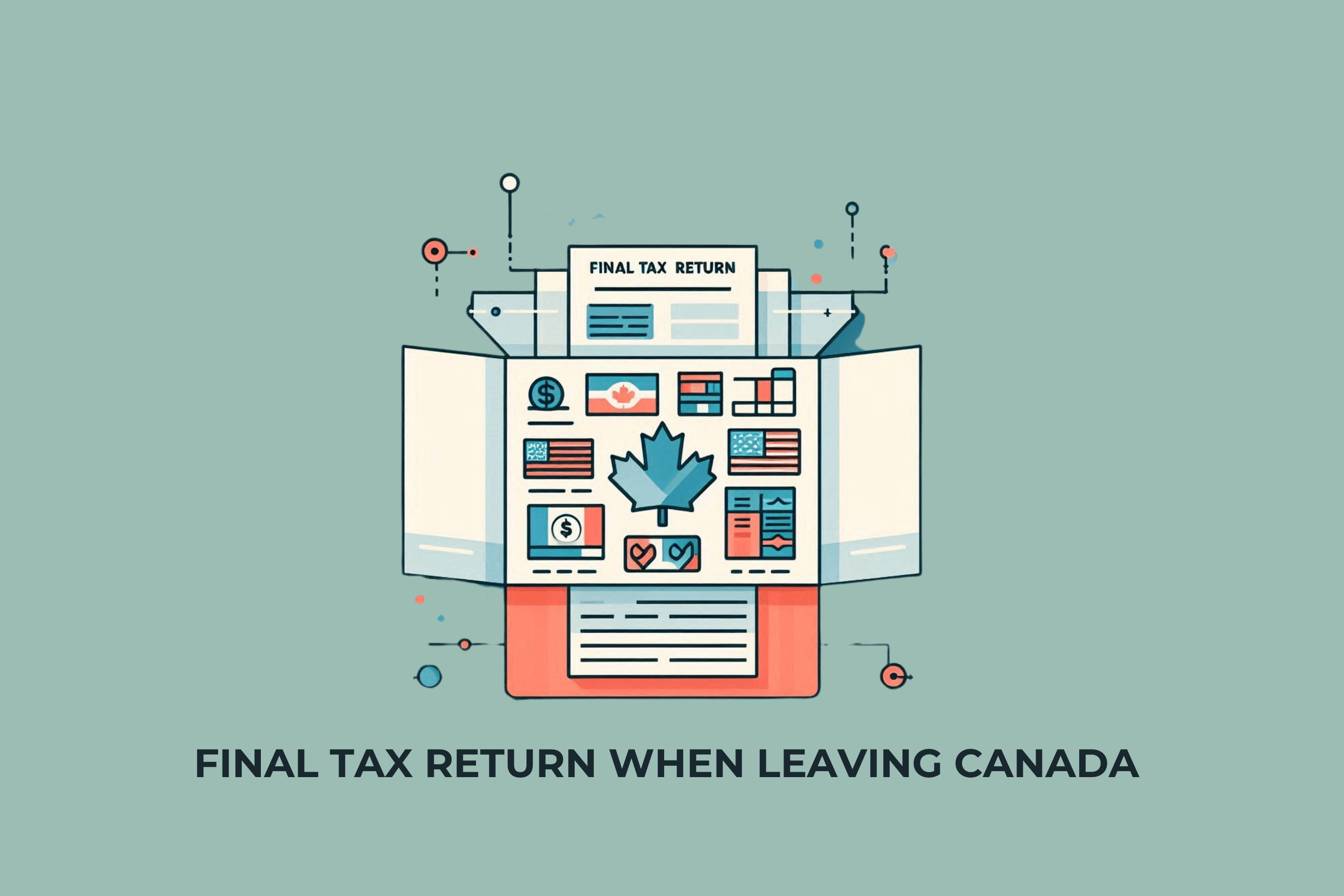
Final Tax Return When Leaving Canada
Introduction:
Filing your final tax return on permanently leaving Canada might appear
overwhelming but splitting it into manageable steps can simplify the procedure.
Here is a detailed guide according to status in Canada.
Key Takeaways
|
Key Points |
Part-year Residents |
Non-Residents |
|
Forms Needed |
T1 General, Form
T1161, T1243 |
T1 General,
NR73, NR74 (Optional), S216 Return |
|
Income to Report |
Worldwide income
up to departure date |
Canadian-source
income |
|
Filing Deadline |
April 30 or June
15 |
April 30 or June
15 |
|
Special Considerations |
Departure tax,
principal residence exemption, deemed disposition, and other related forms |
Withholding tax,
tax treaties |
For Part-year Residents
1.
Confirm
you are a resident for tax purposes up to the date you leave Canada.
2.
Gather Necessary Forms:
o
T1 General: This is the main form for filing your income tax return.
o
Schedule 1: To calculate your federal tax.
o
Schedule 3: For capital gains and losses.
o
Form T1161: List of properties are subject to departure tax by an emigrant of
Canada.
o
FormT1243:
Deemed Disposition of Property by an Emigrant of Canada
3.
Report Your Income:
o Employment Income: Reported on T4 slips, to be
included in employment details.
o Investment Income: Reported on T5 slips, to be
included in T1.
o Rental Income: Reported on Form T776, to be
included in T1.
o Pension Income: Reported on T4A, T4A(OAS),
and T4A(P) slips, to be included in T1.
o Include all worldwide earned income up to the date of your departure in the T1
general form.
4.
Calculate Departure Tax:
If applicable, calculate the departure tax on certain properties
based on their fair market value at the time of departure. Use Form T1243 and
T1161
5.
File Your Return:
Send your completed tax return before the deadline.
The deadline for filing your final tax return is the
same as for any other tax year:
o April 30th: For most individuals.
o June 15th: If you or your
spouse/common-law partner are self-employed.
Example for Residents:
Julian is leaving Canada on June 30 and cease all the
ties with Canada on Jun 30, then she file a T1 General form and report all her
worldwide income until June 30 and Canadian sourced income for the period Jul 1
to Dec 31. Julian submits the final tax return before
April 30 of the following year.
For Non-Residents
1.
Confirm
you are a non-resident for tax purposes after leaving Canada.
2.
Gather Necessary Forms:
o
T1 General: For filing your income tax return.
o
NR73:
Determination of Residency Status (Leaving Canada).
o
NR74:
Determination of Residency Status (Entering Canada).
o
S216 Return: Reporting net income rather than gross amount.
o
Form T1261: Application for a CRA Individual Tax Number (ITN) if you don’t
have a Social Insurance Number.
3.
Report Income:
o Employment Income: Reported on T4 slips, to be included in employment details.
o
Investment Income: Reported on T5 slips, to be included in T1.
o
Rental Income: Reported on Form T776, to be included in T1.
4.
Pension Income: Reported on T4A, T4A(OAS), and T4A(P) slips, to be included in T1.Withholding Tax:
Withholding tax is taxation
subtracted from income at the source, prior to being received by the recipient.
Non-residents in Canada need to pay a 25% withholding tax on specific types of
Canadian income.
Types of Income
Subject to Withholding Tax
o
Dividends
o
Rental Income
o
Interest
o
Pensions
Tax treaty and Section 216 Election could
provide exemptions and tax reductions.
5.
File Your Return: Submit your tax return before April 30 (or June 15 for businesses) of
the following year.
Example for Non-Residents:
Tom left Canada on June 30 and
ceased all ties with Canada on that date. Tom confirms non-resident status by
completing Form NR73. Tom reports all worldwide income earned up to June 30 on
the T1 General form and Canadian-sourced income earned from July 1 to December
31. Tom needs to pay a 25% withholding tax on Rental income received after
becoming a non-resident. Tom submits the final tax return before April 30 of
the following year.
Conclusion
ASAN Can Help
Empower your financial future with ASAN's expert guidance on Canadian & US Taxation. We strive to align investments with your goals for true financial freedom.
Ready to take the next step?
Contact Us
📞 Phone: +1(613)-981-7097
🌐 Website: asangroupinc.com

